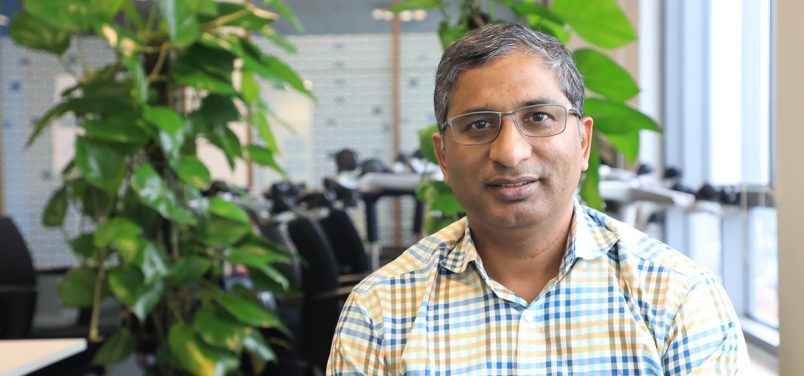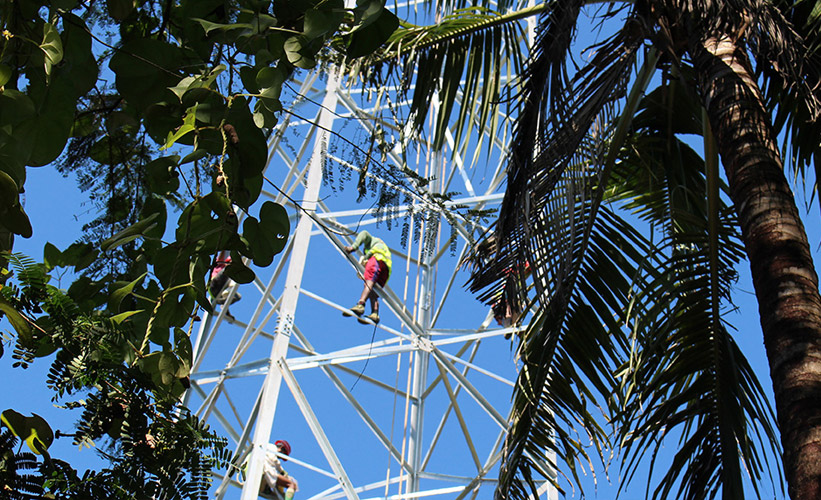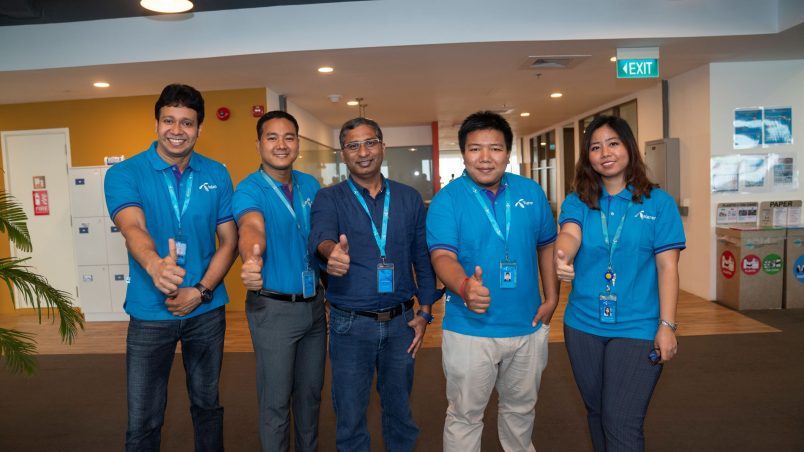The might of light: how sunshine powers towers in Myanmar
Safeguard
Safeguarding planet, people and data in the digital world and beyond
Safeguard means that Telenor constantly raises the bar for the safety, security and privacy for our customers, partners and employees, as well as the health of our planet to drive positive, long-term change.

Diesel’s days are numbered in Myanmar, as Telenor engineers steadily swap to solar to power their towers.
At the time of writing, almost 24 million people in Myanmar use Telenor’s network. Behind the calls, posts, streams, uploads, downloads and video meetings is a complex network of base stations whirring away, providing the essential foundation to connect these millions of digital lives. That takes energy. Lots of energy.
Explaining and understanding the nature of a tower network is a lecture for another day. For the sake of this story, though, all you need to know is that, until recently, Telenor’s network in Myanmar has been dependent on two sources of energy: the national electricity grid and diesel generators. While the grid can sometimes struggle to reach more rural areas of Myanmar’s famously beautiful, tropical landscape, it’s also the case that, environmentally speaking, diesel generators are less than optimal sources of energy.
Some people might be daunted by the challenge of re-imagining the energy sourcing of a high-speed, reliable network that serves 24 million customers, but Raihan and his colleagues are not some people.
Look on the bright side
Into any life, we’re told, a little rain must fall. That’s true in a very literal sense for Myanmar, where the rainy season can be long, intense and heavy. Here’s the thing, though: even including monsoon season, average daily Effective Sunshine Hours (ESH) in Myanmar is still an impressive five and a half hours. During the hottest two months of the year, Mr Sun generates enough energy in kilowatts per square metre daily to boil more than 600 kettles.
Harnessing that energy for Telenor’s network was the challenge facing Head of Operations, Raihan Abdur and his team.

While Raihan remembers being “excited and confident” starting out, the proof-of-concept weighed heavily on the team’s shoulders. Before the work of transitioning to a new source of energy (namely, photovoltaic panels or solar panels to you and I), the team needed to prove the value of the swap.
In doing so, they had another obstacle to navigate: solar panels may be better for the pocket and the planet, but they take up a lot of space. This means more land is essential to make it work.

Where there’s a will, there is usually a way. Raihan and the team set about renegotiating land leases and convincing stakeholders of the value of the solar switch. They proved through two successful pilots that switching to solar resulted in a 70% reduction in energy consumption per site.
Not only that, but, as Raihan notes, “the reliability of the network coverage increased while the number of power outages went south. Perhaps most critically, we saw the potential to reduce carbon emissions quite significantly.”
A new dawn?
Progress has been anything but slow since those pilots. At time of writing, the team has connected more than 1,000 sites to a solar panel source and even more have moved from generators to the grid. The results continue to speak for themselves. On top of the 70% energy savings per site, fuel consumption in the last three years has reduced by 10 million litres. Finally, and perhaps most surprisingly, despite a 15% network expansion, CO2 emissions have fallen by 6%.

“The visibility of the results is a huge motivation for us. To see that tangible impact almost immediately across a range of vital metrics is just so encouraging,” Raihan says. It’s that very motivation that has fuelled Telenor Myanmar’s goal to bring the days of the diesel generator to an end. Their mission continues to convert thousands of sites across the country to solar or electricity sources.
The future, it would seem, is bright.